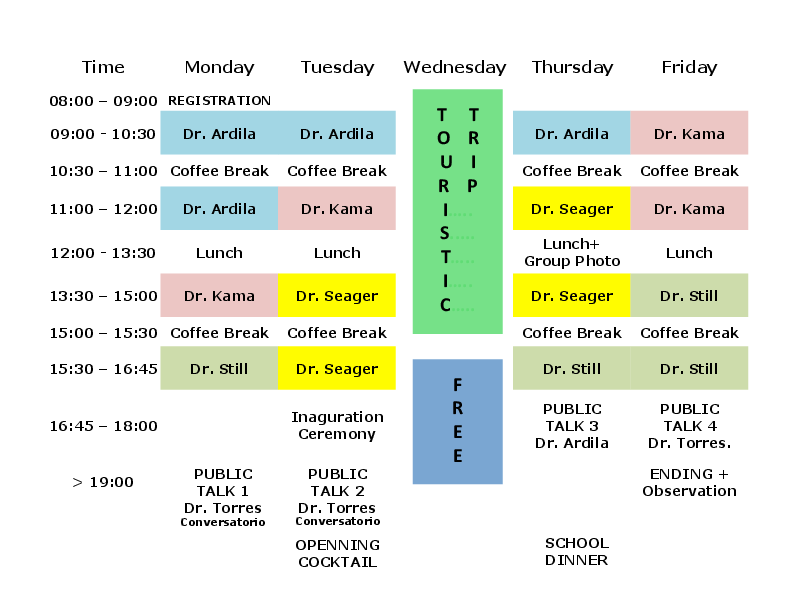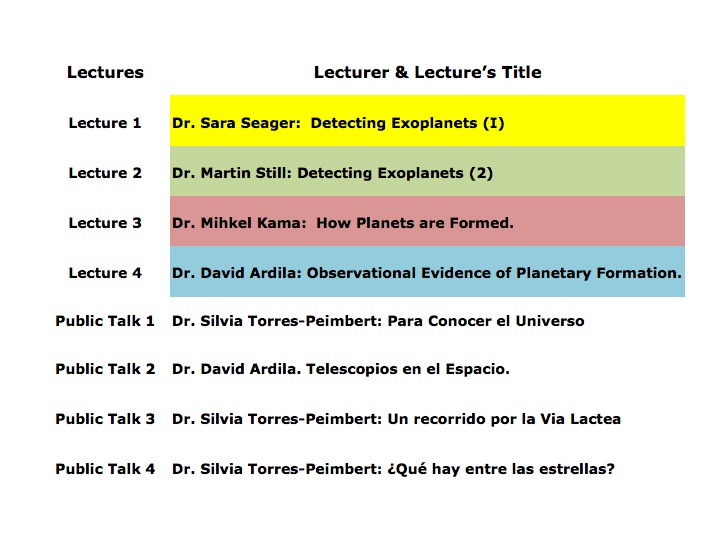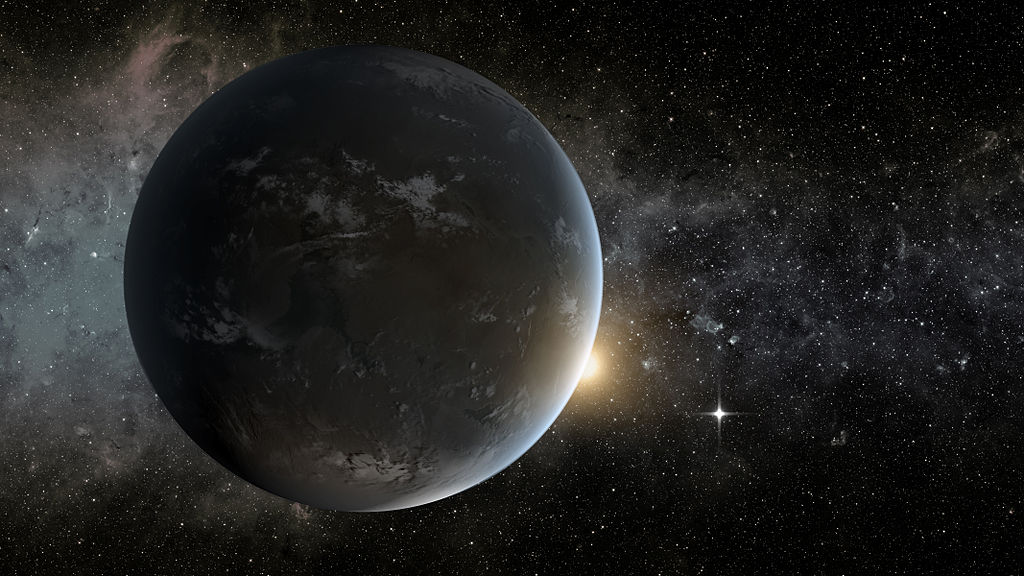| Home | Schedule | Participants | FAQ | photos |
First Guatemalan School of Astrophysics
Searching, Discovering, Characterizing and Modeling Exoplanets
Antigua Guatemala, December 9-14th 2013.Schedule
The academic activities are planned as follows. The opening cocktail and school dinner are RSVP.


Lecture Topics
This is the general plan of the lectures. There could be small variations depending on time availability.
Dr. David ArdillaLecture 1: Introduction to Star Formation. Our place in the universe. The intersterar medium (ISM). The neighborhood of star formation regions. HII regions. Jeans' mass and collapse. Stellar classification and the magnitude system. The spectral sequence. Stellar evolution. T Tauri stars and Herbig Ae/Be stars. Lecture 2: Protoplanetary Disks. The concept of optical depth. The role of extinction. Stellar colors. How to find disks. What can the SED tell us? Disk Flaring. The disk composition. Grain growth. Accretion measurements. FU Ori stars. Masses and Sizes. The Minimum Mass Solar Nebula Lecture 3: Debris disks. Disk evolution. Transition disks. Disk dissipation mechanisms. The discovery of DD. Structures in debris disks. DD and planets. Statistics. |

|
Dr. Mihkel Kama
Lecture 1: What are planets? Why do we care about them and their formation?, What is a (physical) model?, What kind of objects and matter is there in the Solar System?, Solar System and extrasolar planets are diverse. Main types of planet, Planet formation is not a uniquely determined initial value problem, but a stochastic process that only partly cares about initial conditions. From the ISM to disks, ISM: the stuff between the stars. Broad picture. Composition and origin. Main phases, focus on molecular clouds. Formation of bound cores. Gravity vs pressure. Collapse. Angular momentum conservation makes disks. A disk as a physical system: energy sources and cooling. Physical structure. Exercise: angular momentum conservation from rigid core to Keplerian disk.
Lecture 2: Disk evolution: protoplanetary to debris to planetary system. Accretion of/through the disk. Grain growth, growth timescales and problems. Gas dissipation, final assembly of giant planets, effect of gas loss on solid dynamics. Debris disks, N-body processes, final assembly of terrestrial planets. Exercise: grain growth timescale.
Lecture 3: Mechanisms of planet formation. Core accretion vs gravitational instability. Detailed buildup of single planets vs. general physical considerations. Core buildup, atmosphere buildup. Planet migration (in a gas disk, in a planetesimal disk). Exercise: Temperature-Radius structure of an accreting body
Lecture 4: Population synthesis and summary. Combining our global disk evolution picture with planet formation mechanisms. Observed vs modeled planet distributions. Giant planet metallicity dependence. Small planets no metallicity dependence? (but: without any metals, no planets). What can models explain right now? What can models not explain right now? The Future
Dr. Sara Seager
Lecture 1: Summary of Exoplanet Detection Techniques. Note some of this is already covered in other lectures and I will go over those topics (e.g., transits) in less detail)
Lecture 2: Planetary Atmospheres. Range of compositions. Planetary spectra and introduction to the radiative transfer equation. Molecular absorption basics.
Lecture 3: Range of planetary atmospheres. Basic physics behind planet atmospheres. Examples of exoplanet atmosphere data sets.
Lecture 4: The habitable zone. Biosignature Gases. Mission concepts to find other Earths.
Dr. Martin Still
Lecture 1: The principles of exoplanet transits and their detection. A summary of the Kepler goals. A mission description. A summary of the current Kepler exoplanet statistics.
Lecture 2: A walk through the Kepler yield: Planet size (+density). Orbit size (Teq, HZ). Multiplicity. Orbital Inclinations (obliquity, star spots). Transit times (TTVs). Occultations (heating, ellipsoidal variations, beaming). Evaporating planets. Circumbinary planets
Lecture 3: Reliability and Completeness of the Kepler Sample. Systematic False Positives. Astrophysical False Positives (EBs, BEBs). Transit dilution (binary stars). Follow-up observations. Stellar Parameters (size, luminosity, age, activity). Transit detection completeness. Eta-Earth
Lecture 4: How to Get Involved Practically. How to create Kepler photometry and make it better than the archived data. How to find a transit-like event in the Kepler data. How to identify a Kepler planet candidate. How to validate a Kepler planet. Where to find the planet tables and statistics. What to look forward to: Kepler deep-diving, K2, TESS.
Last modified: Wed Feb 12 11:25:38 CST 2014